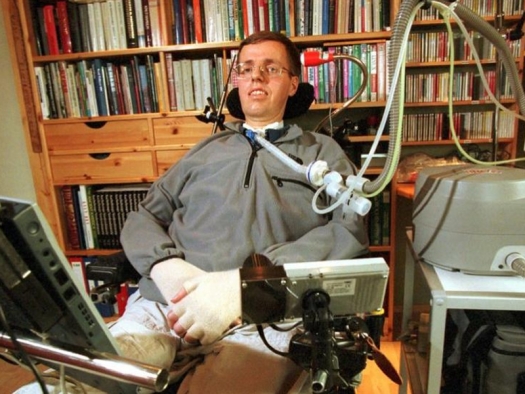ALS-PerVilland.jpg

Photo by Sigmund Krøvel-Velle, for the Hallingdølen newspaper / Wikimedia Commons, CC BY-SA 4.0
Lou Gehrig's disease, also known as ALS (amyotrophic lateral sclerosis), is a fatal neurodegenerative disorder for which there is no official treatment. However, in 2009 researchers reported on a group of patients with ALS and how they responded to being treated with stem cells. The majority of them did unbelievably well. And now, another study is again showing promise with stem cells.
In the original study, the researchers treated 13 patients with ALS. All of them had severe loss of movement. The researchers took the stem cells from the patients’ own bone marrow. They injected the stem cells into the spinal cord in the upper neck during a surgical procedure. The patients were then followed for a year.
During the follow-up period, nine of the patients (67%) actually improved. Since ALS is a progressive disease that only gets worse, that is a remarkable result. One patient remained stable and did not worsen at all. The other three died from either lung infections or heart attacks that were unrelated to the stem-cell treatments. There were no side effects from the treatment.
As fantastic as these results were, there was one problem with the treatment. It involved a surgical procedure called a cervical laminectomy. In a cervical laminectomy the surgeon removes a portion of the spine in the neck called the lamina. The procedure is a major operation with residual scar tissue. And even though these patients all handled the surgery very well, it still has dangers. So, might there be a better way? That’s what the researchers in the second study decided to investigate.
To do the study, they looked at 57 men and women with ALS. They treated 37 of them with stem cells taken from their own bone marrow just like in the first study. Only instead of injecting them using a surgical procedure, they injected the cells directly into the spinal fluid using a lumbar puncture technique. This is referred to as an intrathecal injection. Unlike with surgery, this is a simple, 10-minute technique that can be safely done in any out-patient clinic. They then followed the treated patients and compared them to the 20 patients who did not get the stem cells.
The average survival time of the stem cell group was 87.76 months. Compared to 57.38 months in the untreated group, it meant a 53% improvement in lifespan. Additionally, the patients who did the best in the treated group were those who were diagnosed before the age of 50, and who were also taking lithium supplementation. I have reported to you before on research showing that supplementing with the mineral lithium can have a positive effect on ALS.
There was one flaw in the second study. Because bone marrow-derived stem cells can cause inflammation, the researchers gave the patients a huge amount of steroids at the same time they injected the stem cells. The steroid acted to reduce any inflammation that the stems cells might cause. The problem with that is that stem cells are activated by inflammation. So, there’s a good chance that the results would have been even better without the steroids. And that leads to my comment.
The bone marrow stem cells derived from the patients in both of these studies are known as autologous stem cells. Although it is somewhat controversial, there are two potentially negative issues with using these kind of stem cells.
One is that as already mentioned, they can cause significant inflammation. The other is that since they are being taken from older people, they are not nearly as effective as stem cells in young people. As we get older, our stem cells lose a lot of their regenerative effects. What might be a much better solution is cord-derived stem-cell exosomes.
Cord-derived stem-cell exosomes come from the stem cells found in the umbilical cord of a newly born baby. It is NOT from aborted babies. These stem cells are ethically harvested and have been used effectively for many years.
Stem cells work by going to the area that needs repair and then releasing their exosomes. Exosomes are the tiny vesicles that are in stem cells. The exosomes contain regenerative molecules called growth factors that help to reduce inflammation and regenerate new tissue where tissue has been damaged. I have successfully injected cord-derived stem-cell exosomes intrathecally into the spinal fluid of many patients with literally zero side effects. I have not tried it on patients with ALS, but it makes good sense.
If you’re interested in exploring the use of intrathecal exosomes or stem-cell therapy for ALS and other illnesses that seem “hopeless,” contact The American Academy of Stem Cell Physicians at www.aascp.net. These doctors are experienced in the use of these cells and exosomes.
Exosomes have an additional advantage compared to stem cells. Unlike stem cells, they do not create any inflammation, and therefore no steroids are needed. Furthermore, since cord-derived stem-cell exosomes are derived from a healthy baby, they are much more effective than the exosomes found in the stem cells of older people.
References
Deda H, Inci MC, et al. Treatment of amyotrophic lateral sclerosis patients by autologous bone marrow-derived hematopoietic stem cell transplantation: a 1-year follow-up. Cytotherapy 2009;11(1):18-25.
Sharma AK, Sane HM, et al. The effect of autologous bone marrow mononuclear cell transplantation on the survival duration in Amyotrophic Lateral Sclerosis - a retrospective controlled study. Am J Stem Cells. 2015 Mar 15;4(1):50-65.
Originally published in Second Opinion Newsletter, January 2021, Volume 32, Issue 1. Republished with permission.


